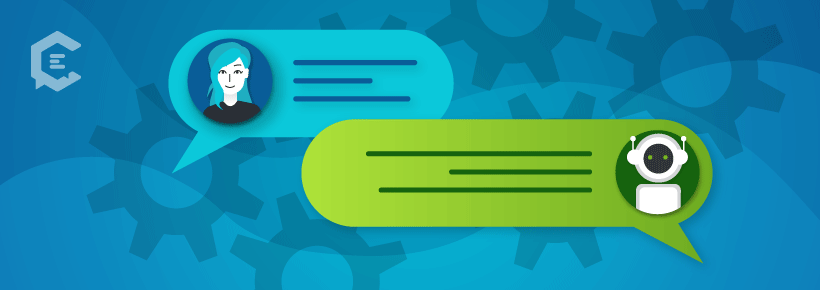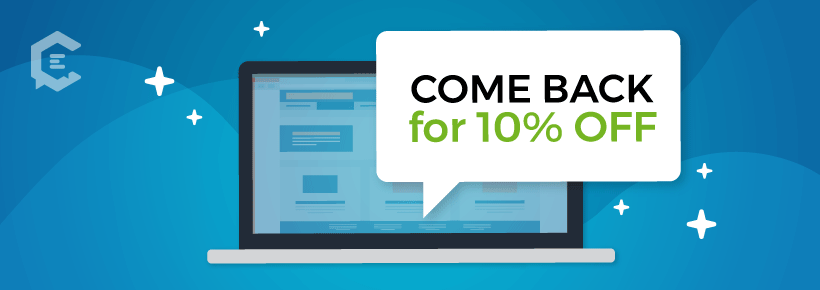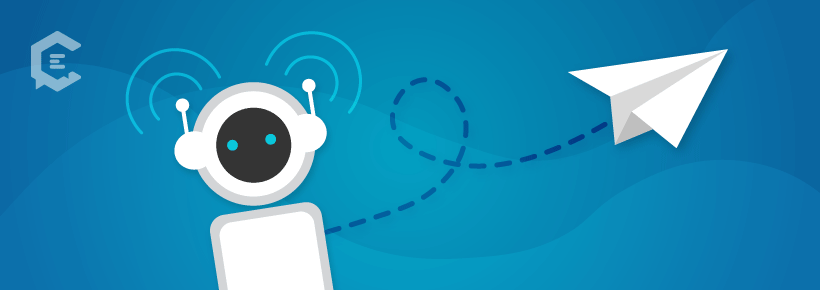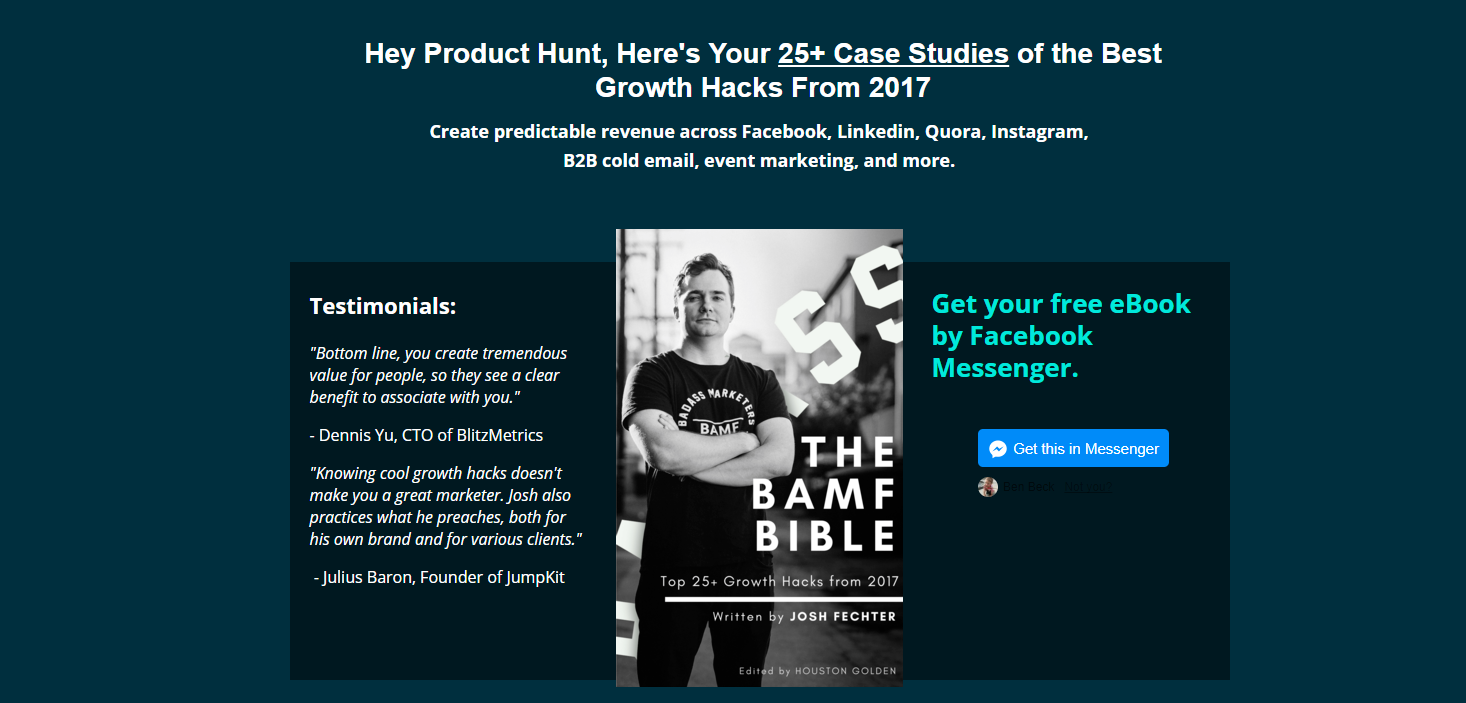Chatbots and marketing automation tools allow modern marketers to personalize brand messaging, perform outreach, and deliver support to prospects and customers. These automation tools help create efficiencies and increase productivity without the requirement of added headcount or time.
Many of the repetitive tasks of lead generation, data collection and interpretation, targeted email campaigns, and content curation now fall under the umbrella of marketing automation. Thanks to cleverly designed pieces of software, marketing teams can improve their reach and target their message more carefully. And now, with chatbots becoming more fluid, reliable, and human-like, a new vista of possibilities is opening up for marketers.
According to Forbes, in 2017, 35.6 million Americans used voice-activated assistants at least one time each month — a 128.9% leap from 2016 that is projected to spike even higher in the coming year. 2018 saw similar developments. In fact, a September 2018 survey by Voicebot.ai found that 57.8 million Americans have brought voice search enabled chatbots into their home, owning at least one smart speaker device.
In late 2017 HubSpot acquired Motion.ai and has already folded into their software the ability for anyone “to build a chatbot to communicate with customers on their terms — no technical skills required.” It’s a bold claim, but has somewhat fallen flat since chatbots emerged from the world of Facebook Messenger in 2015. Many chatbot building platforms, such as Chatfuel, ManyChat, and a dozen or so other chatbot builders were claiming quick chatbot building options since inception. In the last 18 months, as the chatbot building platforms have begun to make good on that promise, the move to chatbot technology is quickly becoming a reality. Moving into 2019, 40% of large businesses expect to launch a chatbot or other type of intelligent assistant in the next year.
Now, as Hubspot and other chatbot builders are making good on their promises that chatbots will better enable businesses to “engage, convert, close and delight their customers,” marketers are on the edge of their seats, waiting to see what new tools 2019 might bring. Based on the current trends, here’s our inside scoop on useful blends of marketing automation software and chatbots that you can expect to see in the coming year.
Revisiting chatbots in your automation
1. Lead Generation
In a world of so much data and digital noise, it can be tough to track down the consumers you want — the people who need you and your products as much as you need them. You can collect big data and filter it and try to implement your findings; but when it comes to real, tangible leads, a new kind of chatbot might be your best friend.
Companies often rely too heavily on venues like the traditional landing page for lead generation. The marketing department crafts a tasty bit of information or a clickable blurb, and when users click the link, they are dumped onto a landing page that blasts them with product sales points or draws out their contact details. Unfortunately, those landing page leads often prove to be weak and unqualified.
Why not try a new approach? Use your data collection software as you typically would to identify the demographic for your target audience; and then, instead of bringing them to a sales-driven landing page, engage their interest by introducing a perky, helpful chatbot. With bot builders like ManyChat and Chatfuel to create the chatbot and integrative tools like Zapier to help you identify healthy leads, you can gain some excellent traction in your 2019 lead generation campaigns.
2. Data Collection
When you implement chatbots throughout your website and social media venues in 2019, you’re going to find that you have a lot of new, fresh information coming in from your customer base. How can you harness all that valuable data and use it before it goes stale? Tools like BotMetrics, DashBot and ChatMetrics help you analyze bot functions and conversations so that you can improve the customer’s experience and draw helpful conclusions about your marketing efforts.
First of all, you can use the information from your chatbot conversations to make the bots better. With a combination of automated tools and human eyes, look through chatbot logs and identify keywords and phrases that clients actually use. This way, you can customize the triggers and responses of your chatbot so that it seems even more human-like and intuitive. You can also incorporate those often-used phrases and keywords into your marketing campaigns and online content to improve SEO and to connect better with customers.
As you review chatbot logs and interactions, you may discover some surprising things about your target audience. You might find that some product elements that aren’t being communicated effectively. Maybe you’ll discover that the name of a product is too long or complicated and that all your clients call it something else! All of this can inform your marketing strategy for 2019 and beyond.
3. Constant Customer Support
Maybe you haven’t previously had the resources to provide quick responses and 24/7 support to your clients. With well-designed chatbots, you can offer the illusion of constant contact to your customers, for less than the cost of 24/7 human support staff. Use your marketing automation tools to collect data about high-traffic times or periods when you experience higher support call volume, and lay out a plan that leverages human presence and chatbots to create a helpful customer service experience. Your current automated systems can be immensely helpful in creating the data library that a chatbot needs in order to function seamlessly.
Many customer support tools are rolling chatbot functionality into their tools. For example, Sprout Social (screenshot below) a leader in customer support via social media, introduced a platform for building an automated Twitter chatbot, for the purpose of 24/7 customer support. Imagine your brand benefiting from 24/7 immediate responses to consumer complaints on Twitter.
4. Customer Involvement
Some companies are beginning to use chatbots more heavily in their social media scene. For example, a company might set up a Facebook Messenger bot that offers quick replies directly to customers who comment on a Facebook post. A customer who asks a particular question or mentions a specific product might receive a swift automated response or an email followup. To accomplish this kind of immediate and intimate connection with the customer, you can blend the services of a good chatbot with your email marketing automation software.
5. Successful Sales
What if someone encounters a chatbot on your website, engages with it, and then leaves without making a purchase? Take that important interaction via the chatbot and follow up with a special offer or discount email to entice your wandering client to come back and buy! Thanks to automated email software, you can set up your system to email the discount to all customers who interact with the chatbot and fail to purchase. Those clients will be surprised and pleased that your company noticed and pursued them, and they just might come back to buy your product or service.
6. Segment Prospective Customers
If you’ve thought about your ideal customer journey, the different steps your customers should be taking as they proceed through the purchase process with your company, then you’ve likely come to the conclusion that each potential customer will interact with your brand in their own way. If one of your prospective customer segments includes early adopters, you may have a better chance of connecting with them through an early purchase platform like Kickstarter. If one of your prospective customer segments also includes 30 something-year-olds that are busy in their professions, you may have better success putting them on a customer journey track designed for on the go professionals.
In steps the ability to segment prospective customers with a chatbot. With chatbots, you can run ads pitching a “how to” style eBook, and drive people into a chatbot conversation. Once there, you can tell your prospective customer that you’ll be providing them with a customized eBook version, made just for them and their needs. You then explain that all they need to do is take a quick 3 minute personality quiz. They answer a couple of questions in your chatbot, and you provide them with the pre-saved eBook you designed for someone of their persona. Voila! Now you know which prospective customer segment they fall into and you can market to them accordingly.
7. Customer Loyalty
Merging the use of chatbots with your automated marketing systems can have several positive effects, including a noticeable improvement in customer loyalty. Think about the impact it would have on your clients if you were suddenly able to provide 24/7 support, respond to their Facebook comments immediately, send them followup emails with incentives, and offer them quick, convenient answers to questions whenever they stop by your website. Coupled with a quality product or reliable service, that kind of interactivity and engagement can create a powerful bond between consumer and provider.
8. Launch a Product
If you’re an entrepreneur or work within a marketing or product team where you help with new product launches, then you should think about using a chatbot to launch your next product. Launching products is a tricky endeavor, as you often have no immediate way to gain feedback on your product, and thus have a difficult time getting a pulse on that new products reception by your customers. I suggest you launch your product via chatbot. Here are a few ideas of how you can launch a variety of products via chatbot:
- If it is a physical product you can advertise on the web, and then direct incoming traffic (from the ads) to a chatbot instead of your website. Have a fun bot that introduces the product. You can include videos, interactive “does this product match your needs” type quizzes, etc. Then, when the person is ready to buy they can even do so through your bot, as most chatbot platforms have native payment processing built in.
- If you are selling a digital product, then a chatbot is the ideal platform for communicating with your prospective customers before purchase and after. Just be sure to also capture their email address, as you don’t want to be fully beholden to whatever messaging service you use (ie. Facebook Messenger) for your chatbot as that platform may change interaction rules down the road – changes that could sink your communication method.
- Be sure to follow-up on any purchases, whether they be for a tangible good or a digital one, in your chatbot. Ask for the customer’s feedback, and if you rely on online reviews (who doesn’t!?) then direct them to a review site.
- As you identify people that love your product, you can then turn the chatbot into a mechanism to request word-of-mouth referrals. If you want to create a customer advocacy group, where you can test new ideas, this is also a great mechanism to do so.
While I’m not a big proponent of growth hacking, one popular growth hacker, Josh Fechter, used a chatbot delivery mechanism to get people into his free eBook. In the first 9 days alone, he had 4,000 eBook requests and more new business leads than he could handle. You can view his chatbot fulfillment mechanism on this landing page by clicking the “Get this in Messenger” button.
Chatbot Quality
One cautionary note: Be sure that the chatbot you select is well-designed and capable of effective communication with your clients. If you skimp on the cost of a ready-made bot or curb the development time of a custom-made chatbot, you’ll end up with a version that replies awkwardly, doesn’t fulfill the needs of customers, and fails to pass the baton to a real human when the conversation goes beyond its capacity. Invest the money and time up front so you can roll out a bot that operates smoothly and serves your company’s specific needs.
Or, as many firms are doing, create a chatbot that handles one small component of your customer communication, and does that one thing really well. Make sure your bot is positioned as just that… not a human, but an actual bot… so that your audience doesn’t assume that you’re trying to trick them. Then, as you improve your bot over time, you can add in more functionality that will further expand the scope of your marketing chatbot’s purpose.
The future of chatbots and automated marketing
According to the American Marketing Association, chatbots are going to be vital players in the future of market research. Stay tuned for more developments as the growth of chatbots in marketing continues into the new year, and look for some unique ways that you can stay on the edge of the curve by integrating chatbots with your existing automated marketing tools.
See Ben’s related articles on chatbots:
- How to Build Your Own Facebook Chatbot in About 10 Minutes
- How to Increase Webinar Attendance With a Concierge Chatbot
- AI and NLP Options to Use for Your Chatbot
- 6 Ways to Use Chatbots in Automated Marketing
- 8 Simple Sources for AI for Creating Your Chatbot
This article was originally published in January 2018. It has been updated with new information.








